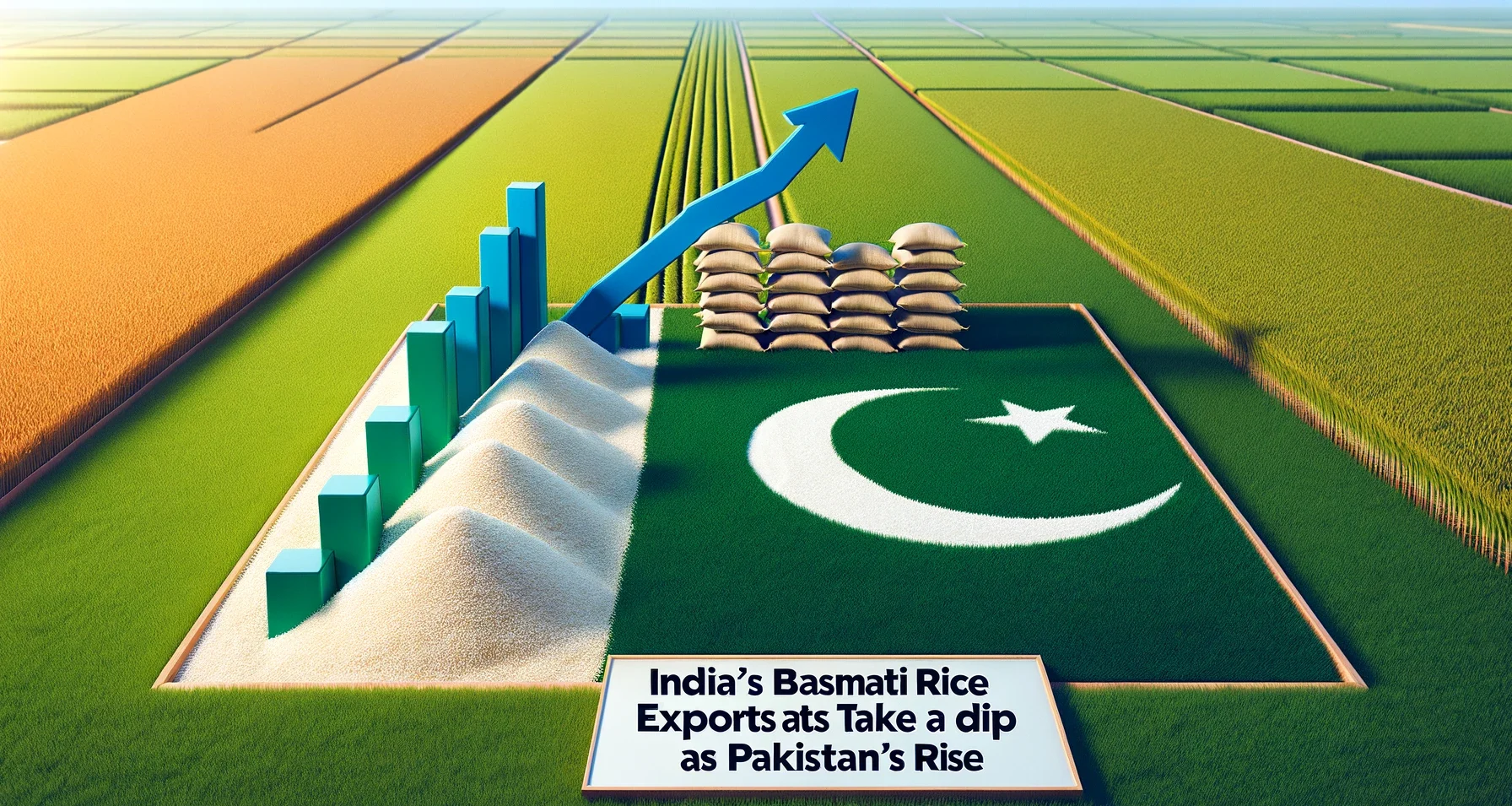About Us
Contact Us
Advertise With Us
Disclaimer
Privacy Policy
Terms & Conditions
Copyright © 2024 - BoldDiscussions.com

The year 2024 brings a new chapter in the agriculture sector, particularly in the basmati rice market. India, once a dominant player in basmati rice exports, is witnessing a slight decline in its export volume. In contrast, Pakistan is making a notable comeback by offering cherished grain at more competitive prices, thanks to a significant rebound in its production levels. This change marks a pivotal point in the longstanding rivalry between the two nations in the basmati rice market.
Basmati rice, renowned for its unique aroma and slender grains, is a staple export product to various countries, including those in the Middle East, the United States, and others. Historically, India and Pakistan have been at the forefront of supplying this premium rice variety to the global market.
In 2023, India nearly set a new record by exporting 4.9 million metric tons of basmati rice, closely approaching the all-time high achieved in 2020. This surge was primarily due to decreased competition from Pakistan and increased stockpiling by importing countries. The result was a remarkable $5.4 billion in revenue from basmati rice exports alone, showcasing India's significant role in the global rice trade.
However, as we step into 2024, the dynamics seem to be shifting. Pakistan's strategic pricing, coupled with its increased rice production, is starting to attract more buyers, potentially reducing India's market share in the process.
After a period of decreased output, Pakistan's rice production is on the rise again. Predictions suggest that its total rice exports could reach 5 million tons in the 2023-24 financial year. This recovery is partly due to the depreciating value of the Pakistani rupee, which has made its rice exports more appealing price-wise on the international stage.
This shift in export dynamics has broader implications, affecting global food security, pricing, and the reliability of supply chains. India's attempt to regulate the export market through the implementation of a Minimum Export Price (MEP) showcased the challenges of balancing domestic policies with global market demands.
Additionally, logistical issues, such as increased shipping costs and route disruptions, further complicate the international trade of basmati rice, influencing strategic decisions on stockpiling and purchasing.
The evolving scenario in the basmati rice export sector highlights the need for flexibility, innovation, and strategic foresight in the agricultural trade. While India faces a period of adjustment, the situation offers a chance for both India and Pakistan to refine their strategies and adapt to the changing market dynamics.
In essence, the ongoing developments in the basmati rice market underscore the complex interplay between national agricultural policies, international trade, and market competition. As both nations navigate these changes, the global community watches on, reminded of the significance of agriculture in international relations and economic stability.
Disclaimer.
This article provides information only and should not be construed as advice. It is provided without warranty of any kind. Also please note that content on this platform may be subject to copyrighted material. if you believe we have used your content in any way then please get in touch with us. We will take down your content immediately.
Share This Post





BOLDDISCUSSIONS
We Produce Content That informs, Educates And Entertains People Around The World to stay updated on every topic with confidence.
Copyright © 2024 – BoldDiscussions.com

